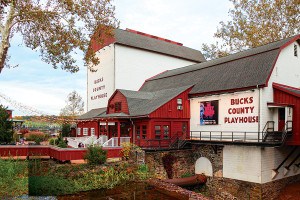Is the Current Land Bank Bill Strong Enough?
The coalition of developers, Realtors and community development corporations pushing to create a city land bank praised the bill Councilwoman Maria Quiñones-Sanchez is sponsoring for streamlining the city’s cumbersome process for getting vacant land into the hands of those who will redevelop it. But at a news conference today, they argued that the bill could speed things up even more and urged supporters to work for changes that would improve it.
The main purpose of the news conference called by the Philadelphia Land Bank Alliance (PLBA) was to spell out in detail just how cumbersome the process is and how both the current and improved bills would return vacant land to productive use faster.
Rick Sauer and Beth McConnell of the Pennsylvania Association of Community Development Corporations (PACDC) walked a group of reporters and other PLBA members through the process, as depicted on the flowchart above, during a lunchtime teleconference call.
Right now, Sauer explained, three different city agencies own vacant land, and it takes anywhere from 1.5 to 3.5 years on average to get a chunk of it from one of the agencies. The path from city agency to developer snakes through the city’s Vacant Property Review Committee (VPRC), City Council, the Redevelopment Authority (RDA), the VPRC again, the Law Department, the Department of Public Property, the RDA again, and the VPRC one last time.
“It takes three to nine months just to get through the first four steps” with the VPRC, Sauer said.
Quiñones-Sanchez’s bill makes two major changes: it consolidates ownership of vacant land in the hands of the new land bank and removes the Law and Public Property departments and the RDA from the picture. Having the land bank’s own legal staff handle both legal review and deed preparation cuts six to 12 months off the transfer time.
Sauer added, “The reason the process takes so long is in part because the Department of Public Property must transfer the land to the Redevelopment Authority first.” Cutting the 12 to 18 months that takes from the process brings the total down to one to 1.5 years on average.
But with further efficiencies, he said, the process could take even less time. An amendment the PLBA supports would also remove the VPRC from the picture, cutting the total transfer time to an average of nine months.
“At the current rate of 200 properties a year, it would take us 150 to 200 years to work through the city’s inventory of vacant land,” Sauer said. “The city really needs to get these properties back into the hands of developers, businesses, urban farmers – whoever would get this land back into productive use,” McConnell said.
McConnell and Sauer also stressed the need to get a mix of qualified experts in planning and development and community residents on the land bank board and the need for the board to develop a comprehensive plan for the disposal of vacant land and follow it closely. The alliance proposes two additional amendments to ensure both public input into land bank decisions and adequate community represntation on both the interim and permanent land bank boards
“There are only three more sessions left before Council goes into mid-December recess,” Sauer said. “We’d like to get the new process up and running as soon as possible, so getting the bill and these amendments passed before Dec. 12 at the latest is important.”


